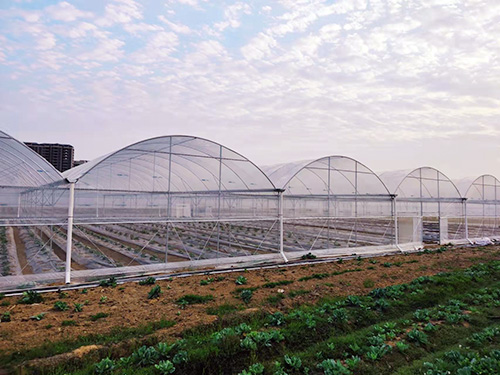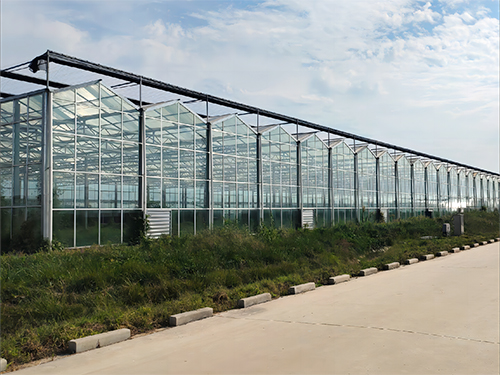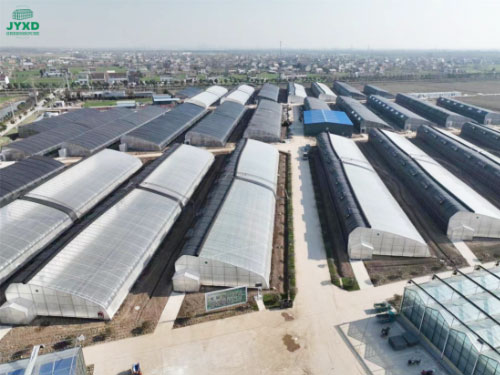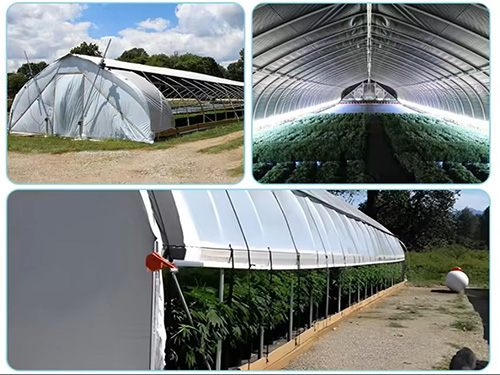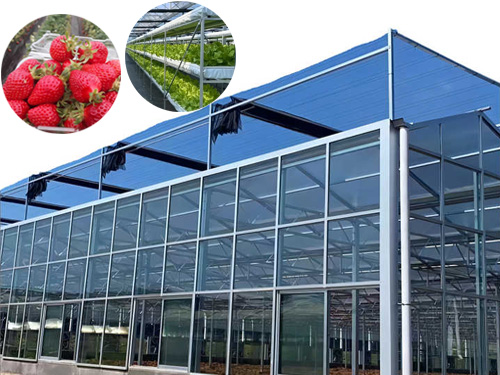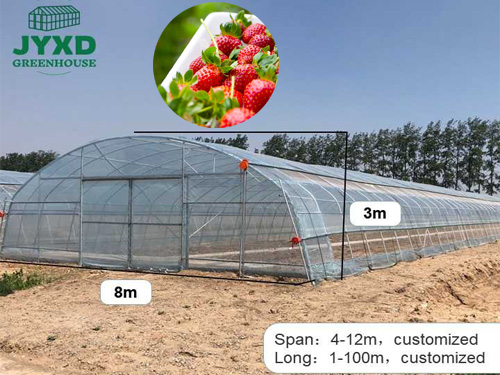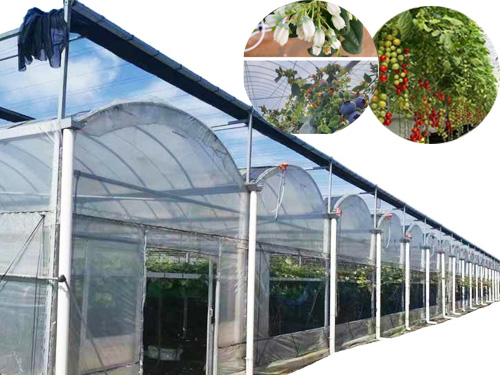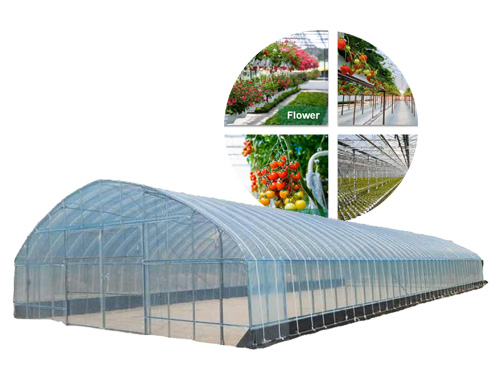NEWS DETAILS
NEWS INFORMATION
Coastal Greenhouses: Wind and Salt Protection Design and Maintenance
AUTHOR:jyxd-greenhouse DATE:2024-12-31 08:37:40 HITS:145
Coastal regions present unique challenges for greenhouse cultivation due to specific climatic conditions, such as strong winds, salt spray, and high humidity. To successfully achieve greenhouse cultivation in coastal areas, targeted wind and salt protection measures must be implemented in the design, material selection, construction, and maintenance of the greenhouse. This article will detail coastal greenhouse wind and salt protection technology, covering everything from design concepts to daily maintenance, to help you better protect your greenhouse, increase yield, and enhance profitability.
Challenges Coastal Greenhouses Face
1. Strong Wind Impact
Coastal areas frequently experience strong winds and natural disasters like typhoons, which challenge the stability of greenhouse structures.
2. Salt Spray Corrosion
The sea air contains high salt levels, which can corrode greenhouse structures and affect plant growth.
3. High Humidity
Elevated humidity increases the risk of plant diseases, which can impact crop health and growth.
4. Temperature Fluctuations
Coastal areas experience significant temperature changes, requiring an efficient temperature control system to maintain a stable growing environment.
Wind and Salt Protection Design for Coastal Greenhouses
1. Choosing Durable and Corrosion-Resistant Materials
· Corrosion-Resistant Metals: Use stainless steel, hot-dip galvanized steel, or aluminum alloys, which can effectively resist salt spray corrosion.
· Wind-Resistant Materials: Use robust frame structures, such as reinforced PVC or carbon fiber materials, to improve wind resistance.
2. Optimizing Greenhouse Structure Design
· Streamlined Structure: A streamlined greenhouse design minimizes wind resistance and reduces the impact of strong winds on the structure.
· Reinforced Support Systems: Place diagonal supports and cross supports at key positions to strengthen the greenhouse's wind resistance.
· Protective Walls and Wind Barriers: Set up protective walls and wind screens around the greenhouse to dissipate wind forces and reduce the risk of salt spray entering the greenhouse.
3. Salt Spray Protection Technologies
· Salt-Resistant Coatings: Apply corrosion-resistant coatings on the surface of greenhouse structures to withstand salt spray corrosion.
· Anti-Salt Glass and Film Materials: Use corrosion-resistant glass or salt-resistant PVC films to effectively protect the greenhouse environment from salt spray damage.
· Sealing Structures: Strengthen the greenhouse's sealing to minimize the chance of direct salt-laden air entering the greenhouse.
4. Intelligent Temperature Control and Irrigation Systems
· Automated Temperature Control: Utilize smart temperature control systems to automatically adjust heating and cooling equipment according to temperature requirements.
· Precision Irrigation Systems: Introduce drip irrigation and micro-sprinkler technologies to ensure efficient water use while preventing salt buildup.
· Humidity Control Systems: Use dehumidifiers and ventilation systems to control humidity, preventing plant diseases caused by excessive moisture.
Daily Maintenance and Protective Measures
1. Regular Inspection and Maintenance of Greenhouse Structures
· Conduct quarterly inspections of the greenhouse framework, glass, and films to identify any damage or corrosion.
· Repair problems promptly and replace damaged components as necessary to maintain structural stability.
2. Cleaning and Salt Removal
· Regularly clean the greenhouse surface with fresh water to remove accumulated salt deposits.
· Install freshwater misting systems inside the greenhouse to help neutralize the effects of salt spray on plants and structures.
3. Enhanced Plant Health Management
· Crop Rotation and Mixed Planting: Crop rotation helps reduce soil salt accumulation, while mixed planting with different plants improves disease resistance.
· Salt-Tolerant Plant Varieties: Select herbaceous or vegetable varieties known for high salt tolerance for planting.
4. Introducing Biological Protection Technologies
· Place natural pest control agents, such as ladybugs and bees, inside the greenhouse to reduce the need for chemical pesticides.
· Use organic fertilizers and compost to improve soil structure and reduce salt accumulation.
Market Strategies to Enhance Economic Efficiency
1. Branding and Certification Advantages
· Obtain organic or eco-friendly certifications to emphasize a green, healthy brand image, attracting high-end consumers.
· Develop a brand story that connects wind and salt protection technology with eco-friendly practices, building market trust.
2. Diversifying Sales Channels
· Farmers’ Markets and Direct Sales: Use farmers' markets or community-supported agriculture (CSA) programs to sell fresh products directly to consumers.
· E-commerce and Exports: Sell products on domestic and international e-commerce platforms, expanding export channels and meeting overseas market demand.
3. Collaborative Research and Technology Exchange
· Partner with research institutions, universities, and agricultural experts to develop more efficient wind and salt protection technologies.
· Participate in agricultural trade shows to exchange technology and collaborate with industry peers, opening up new opportunities.
Conclusion
Greenhouse cultivation in coastal regions presents significant challenges in terms of wind and salt protection. By using corrosion-resistant materials, optimizing structure designs, incorporating intelligent technology, and strengthening daily maintenance, it is possible to effectively protect greenhouse structures and plant health. Understanding the unique needs of coastal greenhouses and implementing scientifically designed protective measures can not only increase yield and quality but also strengthen market competitiveness. If you are seeking professional greenhouse construction and maintenance solutions, contact our team. We offer customized services and comprehensive technical support to help you achieve your goals.
Hebei Juyou Xinda Greenhouse Facilities Co.,Ltd.
Copyright © 2024-2025 https://www.jyxd-greenhouse.com. All Rights Reserved Hebei Juyou Xinda Greenhouse Facilities Co.,Ltd.Copyright





 Current Location:
Current Location: